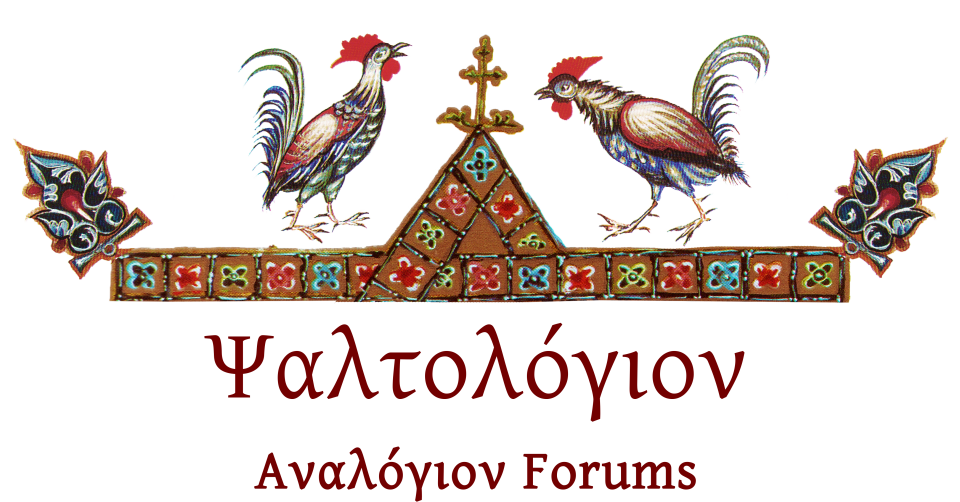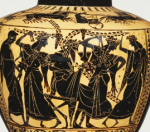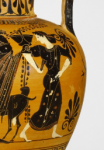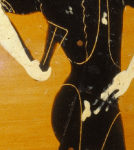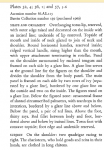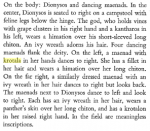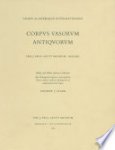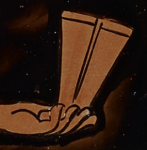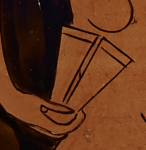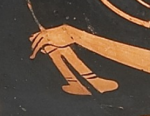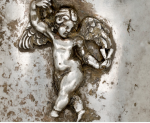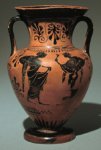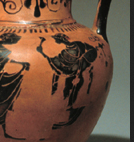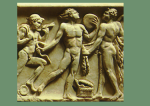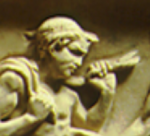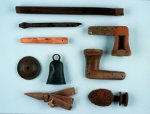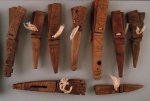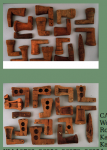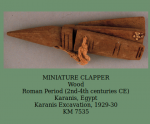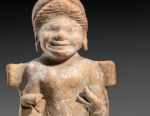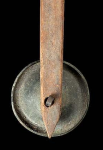You are using an out of date browser. It may not display this or other websites correctly.
You should upgrade or use an alternative browser.
You should upgrade or use an alternative browser.
Τετράδιο εργασίας καταλογογράφησης αρχαιοελληνικών μουσικών θεμάτων
- Thread starter Zambelis Spyros
- Start date
Zampelis Spyros
Member
Zampelis Spyros
Member
Title:
Attic Black-Figure Hydria
Artist/Maker:
Attributed to Leagros Group (Greek (Attic), active 525 - 500 B.C.)
Culture:
Greek (Attic)
Place:
Athens, Greece (Place Created)
Date:
about 510 B.C.
Medium:
Terracotta
Object Number:
86.AE.115
Dimensions:
47.5 cm (18 11/16 in.)
Inscription(s):
Meaningless inscriptions and pseudo-letters.
Alternate Title:
Restored Water Jar with Dionysos and Dancing Maenads (Display Title)
Department:
Antiquities
Classification:
Vessels
Object Type:
Hydria
On the shoulder: two quadrigae racing to the right. On the body: Dionysos, seated on a diphros, surrounded by dancing maenads. He holds a kantharos and grapevines, and wears an ivy wreath. The two maenads nearest Dionysos wear animal skins, and play krotala. In the field are meaningless inscriptions. Ornament: tongues (alternating red, black) on the shoulder; framing the scene on the body: ivy leaves. Predella: encircled horizontal palmettes. Rays at the base.
Bibliography
True, Marion, and Jiri Frel. Greek Vases: Molly and Walter Bareiss Collection (Malibu: J. Paul Getty Museum, 1983), p. 72, no. 61.
"Acquisitions/1986." The J. Paul Getty Museum Journal 15 (1987), pp. 160-61, no. 7.
Clark, Andrew J. Corpus Vasorum Antiquorum. The J. Paul Getty Museum 1 (USA 23). Malibu: 1988, p. 60; pls. 52, 4; 56,1 and 57, 5-6.
Manakidou, Elene P. Parastaseis me Armata. Thessaloniki: 1994, p. 291, no. 14.
Schreiber, Toby. Athenian Vase Construction: A Potter's Analysis (Los Angeles: J. Paul Getty Museum, 1999), pl. VIII.
Kirsch, Eva. Greeks in the Boot: Greek Influences in the Italian Peninsula As Reflected in the Pottery of Various Regions, ca. 800-200 B.C., exh. cat. (San Bernardino: California State University San Bernardino, Robert and Frances Fullerton Museum of Art, 2014), Black Figure Technique, entry 1, (illustrated; full-page detail illustration).
http://www.getty.edu/art/collection...eek-attic-about-510-bc/?dz=0.3268,0.5577,3.83
Attic Black-Figure Hydria
Artist/Maker:
Attributed to Leagros Group (Greek (Attic), active 525 - 500 B.C.)
Culture:
Greek (Attic)
Place:
Athens, Greece (Place Created)
Date:
about 510 B.C.
Medium:
Terracotta
Object Number:
86.AE.115
Dimensions:
47.5 cm (18 11/16 in.)
Inscription(s):
Meaningless inscriptions and pseudo-letters.
Alternate Title:
Restored Water Jar with Dionysos and Dancing Maenads (Display Title)
Department:
Antiquities
Classification:
Vessels
Object Type:
Hydria
On the shoulder: two quadrigae racing to the right. On the body: Dionysos, seated on a diphros, surrounded by dancing maenads. He holds a kantharos and grapevines, and wears an ivy wreath. The two maenads nearest Dionysos wear animal skins, and play krotala. In the field are meaningless inscriptions. Ornament: tongues (alternating red, black) on the shoulder; framing the scene on the body: ivy leaves. Predella: encircled horizontal palmettes. Rays at the base.
Bibliography
True, Marion, and Jiri Frel. Greek Vases: Molly and Walter Bareiss Collection (Malibu: J. Paul Getty Museum, 1983), p. 72, no. 61.
"Acquisitions/1986." The J. Paul Getty Museum Journal 15 (1987), pp. 160-61, no. 7.
Clark, Andrew J. Corpus Vasorum Antiquorum. The J. Paul Getty Museum 1 (USA 23). Malibu: 1988, p. 60; pls. 52, 4; 56,1 and 57, 5-6.
Manakidou, Elene P. Parastaseis me Armata. Thessaloniki: 1994, p. 291, no. 14.
Schreiber, Toby. Athenian Vase Construction: A Potter's Analysis (Los Angeles: J. Paul Getty Museum, 1999), pl. VIII.
Kirsch, Eva. Greeks in the Boot: Greek Influences in the Italian Peninsula As Reflected in the Pottery of Various Regions, ca. 800-200 B.C., exh. cat. (San Bernardino: California State University San Bernardino, Robert and Frances Fullerton Museum of Art, 2014), Black Figure Technique, entry 1, (illustrated; full-page detail illustration).
http://www.getty.edu/art/collection...eek-attic-about-510-bc/?dz=0.3268,0.5577,3.83
Attachments
Zampelis Spyros
Member
Object Details
Title:
Doll
Artist/Maker:
Unknown
Culture:
Greek
Place:
Greece (Place Created)
Date:
5th century B.C.
Medium:
Terracotta
Object Number:
74.AD.46
Dimensions:
13.5 cm (5 5/16 in.)
Department:
Antiquities
Classification:
Implements
Object Type:
Toy
Dolls were common throughout the ancient Mediterranean world. In the 500s B.C., Greek artisans began to produce a distinctive form of terracotta doll with separately-made arms and legs, which were attached with string. Unlike today's baby-dolls, these dolls always represent adult women. They have short tunics painted on their torso and this example retains traces of red paint. This doll has simple mitten-shaped hands, but many others carry krotala or castanet-like instruments.
Jointed terracotta dolls like this one have been found in children's graves and in religious sanctuaries. Ancient writers suggest that, just before their marriage, girls would dedicate dolls and other toys to various goddesses. Some scholars, however, think that these terracotta dolls were not the toys referred to in literary sources. They think that their primary purpose was religious. The dolls would have been hung as charms, with the movement and noise of their swinging arms and legs meant to scare off evil spirits. Their placement in graves and sanctuaries would have been connected with this protective role.
J.C. McKeown. Grece, un cabinet de curiosities, Contes etranges et faits surprenants du berceau de la civilisation occidentale. (Paris: Editions Bibliomane, 2014), p. 38.
Title:
Doll
Artist/Maker:
Unknown
Culture:
Greek
Place:
Greece (Place Created)
Date:
5th century B.C.
Medium:
Terracotta
Object Number:
74.AD.46
Dimensions:
13.5 cm (5 5/16 in.)
Department:
Antiquities
Classification:
Implements
Object Type:
Toy
Dolls were common throughout the ancient Mediterranean world. In the 500s B.C., Greek artisans began to produce a distinctive form of terracotta doll with separately-made arms and legs, which were attached with string. Unlike today's baby-dolls, these dolls always represent adult women. They have short tunics painted on their torso and this example retains traces of red paint. This doll has simple mitten-shaped hands, but many others carry krotala or castanet-like instruments.
Jointed terracotta dolls like this one have been found in children's graves and in religious sanctuaries. Ancient writers suggest that, just before their marriage, girls would dedicate dolls and other toys to various goddesses. Some scholars, however, think that these terracotta dolls were not the toys referred to in literary sources. They think that their primary purpose was religious. The dolls would have been hung as charms, with the movement and noise of their swinging arms and legs meant to scare off evil spirits. Their placement in graves and sanctuaries would have been connected with this protective role.
J.C. McKeown. Grece, un cabinet de curiosities, Contes etranges et faits surprenants du berceau de la civilisation occidentale. (Paris: Editions Bibliomane, 2014), p. 38.
Attachments
Zampelis Spyros
Member
Title:
Black-Figure Neck Amphora
Artist/Maker:
Unknown
Culture:
Greek (Attic)
Place:
Athens, Greece (Place Created)
Date:
about 510 B.C.
Medium:
Terracotta
Object Number:
86.AE.79
Dimensions:
40.4 × 26.2 cm (15 7/8 × 10 5/16 in.)
Alternate Title:
Storage Jar with Dionysos (Display Title)
Department:
Antiquities
Classification:
Vessels
Object Type:
Amphora
Horses were an integral part of the Greek world, used for transportation, entertainment, and warfare. Because of their high cost of maintenance, they also served as symbols of wealth and status. This Athenian black‑figure neck amphora depicts two men leading their mounts. Each man wears a petasos, or broad‑brimmed traveler's hat, and carries two spears. As this vase shows, Greek riders controlled their horses with reins and a bridle, but they had no saddle or stirrups. These men lead their horses at their shoulder on short reins. This follows the practice described by the historian and general Xenophon about a century and a half after this vase was made. In his text The Art of Horsemanship, Xenophon warned against allowing the horse to get either too far ahead or behind on a long lead. By using short reins, the rider could mount the horse quickly if necessary and prevent the horse from getting into mischief.
The back of the amphora depicts the festive atmosphere surrounding Dionysos, the god of wine. Dionysos stands calmly holding his kantharos, or drinking cup, while his companions dance and make music. A satyr, a creature part animal and part human, plays the aulos, or double flutes, and a maenad plays castanet‑like instruments known as krotala.
Bibliography
True, Marion, and Jiri Frel. Greek Vases: Molly and Walter Bareiss Collection (Malibu: J. Paul Getty Museum, 1983), p. 70, no. 41.
"Acquisitions/1986." The J. Paul Getty Museum Journal 15 (1987), pp. 160-61, no. 7.
Clark, Andrew J. Corpus Vasorum Antiquorum. The J. Paul Getty Museum 1 (USA 23). Malibu: 1988, pp. 35-36; pls. 32, 3-4; and 35, 3-4.
Laurin, Joseph R. Poets of Tragedy in Classical Athens (Victoria: Trafford Publishing, 2008), fig. 3, p. 153.
Black-Figure Neck Amphora
Artist/Maker:
Unknown
Culture:
Greek (Attic)
Place:
Athens, Greece (Place Created)
Date:
about 510 B.C.
Medium:
Terracotta
Object Number:
86.AE.79
Dimensions:
40.4 × 26.2 cm (15 7/8 × 10 5/16 in.)
Alternate Title:
Storage Jar with Dionysos (Display Title)
Department:
Antiquities
Classification:
Vessels
Object Type:
Amphora
Horses were an integral part of the Greek world, used for transportation, entertainment, and warfare. Because of their high cost of maintenance, they also served as symbols of wealth and status. This Athenian black‑figure neck amphora depicts two men leading their mounts. Each man wears a petasos, or broad‑brimmed traveler's hat, and carries two spears. As this vase shows, Greek riders controlled their horses with reins and a bridle, but they had no saddle or stirrups. These men lead their horses at their shoulder on short reins. This follows the practice described by the historian and general Xenophon about a century and a half after this vase was made. In his text The Art of Horsemanship, Xenophon warned against allowing the horse to get either too far ahead or behind on a long lead. By using short reins, the rider could mount the horse quickly if necessary and prevent the horse from getting into mischief.
The back of the amphora depicts the festive atmosphere surrounding Dionysos, the god of wine. Dionysos stands calmly holding his kantharos, or drinking cup, while his companions dance and make music. A satyr, a creature part animal and part human, plays the aulos, or double flutes, and a maenad plays castanet‑like instruments known as krotala.
Bibliography
True, Marion, and Jiri Frel. Greek Vases: Molly and Walter Bareiss Collection (Malibu: J. Paul Getty Museum, 1983), p. 70, no. 41.
"Acquisitions/1986." The J. Paul Getty Museum Journal 15 (1987), pp. 160-61, no. 7.
Clark, Andrew J. Corpus Vasorum Antiquorum. The J. Paul Getty Museum 1 (USA 23). Malibu: 1988, pp. 35-36; pls. 32, 3-4; and 35, 3-4.
Laurin, Joseph R. Poets of Tragedy in Classical Athens (Victoria: Trafford Publishing, 2008), fig. 3, p. 153.
Attachments
Zampelis Spyros
Member
Corpus Vasorum Antiquorum: The J. Paul Getty Museum: Fascicule 1
Clark, Andrew J. Corpus Vasorum Antiquorum. The J. Paul Getty Museum 1 (USA 23). Malibu: 1988, pp. 35-36; pls. 32, 3-4; and 35, 3-4.
https://books.google.gr/books?id=zY...cover&redir_esc=y#v=onepage&q=krotala&f=false
Clark, Andrew J. Corpus Vasorum Antiquorum. The J. Paul Getty Museum 1 (USA 23). Malibu: 1988, pp. 35-36; pls. 32, 3-4; and 35, 3-4.
https://books.google.gr/books?id=zY...cover&redir_esc=y#v=onepage&q=krotala&f=false
Attachments
Zampelis Spyros
Member
Title:
Attic Red-Figure Column Krater
Artist/Maker:
Myson (Greek (Attic), active 500 - 475 B.C.)
Culture:
Greek (Attic)
Place:
Athens, Greece (Place Created)
Date:
about 490 B.C.
Medium:
Terracotta
Object Number:
73.AE.135
Dimensions:
35 × 34.5 × 29 cm (13 3/4 × 13 9/16 × 11 7/16 in.)
Alternate Title:
Mixing Vessel with a Dancing Girl (Display Title)
Department:
Antiquities
Classification:
Vessels
Object Type:
Krater
Body, A. Dancing girl facing right, holding krotala (clappers) in both hands. She is nude save for the wreath around her head. She has short hair and bends her head and body forward. B. Diskobolos (diskos thrower) moving to the right with left foot forward. He holds a diskos in his left hand and raises it to be level with his head. He looks down, with knees bent. As his right hand moves back, he draws his right foot back off the ground and places his weight on his left. The thrower is nude except for a wreath around his head. The diskos is decorated with an owl in silhouette. Rim slightly convex on top with a vertical overhang; a flat handle plate extending beyond the rim at each side is supported by two columns; ovoid body; ogee foot. Top of rim black. On neck: A, black dotted chain of pendant lotus buds between two black lines in a reserved panel; B, black. Body black. Zone of black rays above the foot. Outside foot black except for bottom. Resting surface and underside foot reserved. Interior black.
Bibliography
Frel, Jiří. Recent Acquisitions. Ancient Art: The J. Paul Getty Museum (Pullman, Washington: 1974), no. 38.
Peschel, Ingeborg. Die Hetare bei Symposium und Komos in der attisch rotfigurigen Malerei des 6.-4. Jhs. v.Chr. (Peter Lang: Frankfurt, 1987), no. 83.
Scanlon, Thomas F. Eros and the Greek Athletics (Oxford: 2002), p. 228, fig. 8.4.
Tsiafakis, Despoina. Corpus Vasorum Antiquorum. The J. Paul Getty Museum, Malibu, Fasc. 10 (USA fasc. 40). (Malibu: J. Paul Getty Museum, 2019), pls. 521–23.
Plates 521–23
Accession Number 73.AE.135
View in Collection
View in BAPD
Download PDF
Provenance
–1973, Elie Borowski (Basel, Switzerland); 1973, acquired by the J. Paul Getty Museum by exchange; in a letter dated March 30, 1977, Borowski recorded that the krater was in his possession in 1947, but this has not been verified.
Shape and Ornament
Rim slightly convex on top with a vertical overhang; a flat handle plate extending beyond the rim at each side supported by two columns; ovoid body; ogee foot. Top of rim black. On neck: A, black dotted chain of pendant lotus buds between two black lines in a reserved panel; B, black. Body black. Zone of black rays above the foot. Outside foot black except for bottom. Resting surface and underside of foot reserved. Interior black.
Subject
A. Dancing girl facing right, holding krotala (clappers) in both hands. She is nude and wears a wreath around her head. She has short hair and bends her head and body forward.
Attic Red-Figure Column Krater
Artist/Maker:
Myson (Greek (Attic), active 500 - 475 B.C.)
Culture:
Greek (Attic)
Place:
Athens, Greece (Place Created)
Date:
about 490 B.C.
Medium:
Terracotta
Object Number:
73.AE.135
Dimensions:
35 × 34.5 × 29 cm (13 3/4 × 13 9/16 × 11 7/16 in.)
Alternate Title:
Mixing Vessel with a Dancing Girl (Display Title)
Department:
Antiquities
Classification:
Vessels
Object Type:
Krater
Body, A. Dancing girl facing right, holding krotala (clappers) in both hands. She is nude save for the wreath around her head. She has short hair and bends her head and body forward. B. Diskobolos (diskos thrower) moving to the right with left foot forward. He holds a diskos in his left hand and raises it to be level with his head. He looks down, with knees bent. As his right hand moves back, he draws his right foot back off the ground and places his weight on his left. The thrower is nude except for a wreath around his head. The diskos is decorated with an owl in silhouette. Rim slightly convex on top with a vertical overhang; a flat handle plate extending beyond the rim at each side is supported by two columns; ovoid body; ogee foot. Top of rim black. On neck: A, black dotted chain of pendant lotus buds between two black lines in a reserved panel; B, black. Body black. Zone of black rays above the foot. Outside foot black except for bottom. Resting surface and underside foot reserved. Interior black.
Bibliography
Frel, Jiří. Recent Acquisitions. Ancient Art: The J. Paul Getty Museum (Pullman, Washington: 1974), no. 38.
Peschel, Ingeborg. Die Hetare bei Symposium und Komos in der attisch rotfigurigen Malerei des 6.-4. Jhs. v.Chr. (Peter Lang: Frankfurt, 1987), no. 83.
Scanlon, Thomas F. Eros and the Greek Athletics (Oxford: 2002), p. 228, fig. 8.4.
Tsiafakis, Despoina. Corpus Vasorum Antiquorum. The J. Paul Getty Museum, Malibu, Fasc. 10 (USA fasc. 40). (Malibu: J. Paul Getty Museum, 2019), pls. 521–23.
Plates 521–23
Accession Number 73.AE.135
View in Collection
View in BAPD
Download PDF
Provenance
–1973, Elie Borowski (Basel, Switzerland); 1973, acquired by the J. Paul Getty Museum by exchange; in a letter dated March 30, 1977, Borowski recorded that the krater was in his possession in 1947, but this has not been verified.
Shape and Ornament
Rim slightly convex on top with a vertical overhang; a flat handle plate extending beyond the rim at each side supported by two columns; ovoid body; ogee foot. Top of rim black. On neck: A, black dotted chain of pendant lotus buds between two black lines in a reserved panel; B, black. Body black. Zone of black rays above the foot. Outside foot black except for bottom. Resting surface and underside of foot reserved. Interior black.
Subject
A. Dancing girl facing right, holding krotala (clappers) in both hands. She is nude and wears a wreath around her head. She has short hair and bends her head and body forward.
Attachments
Zampelis Spyros
Member
Ancient musicians in action. Wine Cup with Flirtation Scene (inverted view of exterior, with detail below), attributed to the Briseis Painter, vase-painter, and Brygos, potter. Greek, made in Athens, about 480–470 B.C. Terracotta, 12 1/16 in. diam. The J. Paul Getty Museum, 86.AE.293
This drinking cup illustrates several musicians in action. Entertainers play the krotala and the aulos while dancers move to their rhythms.
http://blogs.getty.edu/iris/what-did-ancient-music-sound-like/
This drinking cup illustrates several musicians in action. Entertainers play the krotala and the aulos while dancers move to their rhythms.
http://blogs.getty.edu/iris/what-did-ancient-music-sound-like/
Attachments
Zampelis Spyros
Member
Title:
Attic Red-Figure Cup
Artists/Makers:
Attributed to Briseis Painter (Greek (Attic), active 510 - 470 B.C.)
and signed by Brygos (Greek (Attic), active about 490 - 470 B.C.)
Culture:
Greek (Attic)
Place:
Athens, Greece (Place Created)
Date:
about 480 B.C.
Medium:
Terracotta
Object Number:
86.AE.293
Dimensions:
11.2 × 38.9 × 30.7 cm (4 7/16 × 15 5/16 × 12 1/16 in.)
Signature(s):
Brygos, potter. On handle: in Greek. Translated: "Brygos made [this]".
Inscription(s):
Inscription: On A: ΛΣΙΟΕΤΛ (LSIOETL). On B: ΣΙΛ[ ] (SIL[ ]) (parts of two Greek names ?) On one handle, dipinto in black glaze, ΒΡΥΓΟΣΕΠΟΙΕΣΕΝ (Brygos made it).
Alternate Titles:
Red-figured kylix (Display Title)
Wine Cup with Revelers (Display Title)
Previous Attribution:
Painter: Briseis Painter (Greek (Attic), active 510 - 470 B.C.)
Department:
Antiquities
Classification:
Vessels
Object Type:
Cup
Komasts or revelers frolic around the exterior of this Athenian red-figure cup. The men dance and hold skyphoi (deep drinking cups), while female attendants provide the music with double pipes (auloi) and castanets (krotala). The men’s attire, however, is rather unusual. Like the women, they wear long chitons over which are draped himatia (cloaks), as well as turban-like headdresses and earrings. Also notable is the female figure on each side who accompanies the men with a parasol.
Several dozen vases with similar scenes survive. They are often termed ‘Anakreontic’, after the poet Anakreon, who came to Athens from East Greece in the late 500s B.C. Notably, the costume worn by the men on these vases finds parallels with male attire in the Greek colonies on the coast of Turkey and in the neighboring kingdom of Lydia. East Greek art and ideas – through figures such as Anakreon - began to enter Athenian culture towards the end of the sixth century BC, and the adoption of Eastern dress is part of this trend. More generally, the men’s adoption of typically feminine attire can be understood in connection to Dionysos. Best known as the god of wine, and thus a central figure in any symposium (an ivy-wreathed mixing vessel stands under one of the handles of this cup), he was also associated with the blurring of conventions.
A quieter scene decorates the interior, with a young man offering a flower to a standing woman holding a mirror. The cup is signed under the handle by Brygos as potter.
Bibliography
May, Helmut, ed. Weltkunst aus Privatbesitz, exh. cat. (Cologne: Druckerei J. P. Bachem, 1968), cat. no. A 33; figs. 14-15.
Bothmer, Dietrich von. "Aspects of a Collection." Metropolitan Museum of Art Bulletin 27 (June 1969). pp. 424-436, p. 427; fig. 13.
Bothmer, Dietrich von, and J. Bean. Greek Vases and Modern Drawings from the Collection of Mr. and Mrs. Walter Bareiss. Exh. checklist, The Metropolitan Museum of Art. New York: 1969, p. 7, no. 90.
Beazley, J. D. Paralipomena. Additions to Attic Black-figure Vase-painters and to Attic Red-figure Vase-painters. 2nd ed. Oxford: 1971, pp. 369 and 372, no. 8 bis.
Wegner, M. Der Brygmosmaler. Berlin: 1973, pl. 26 d.
True, Marion, and Jiri Frel. Greek Vases: Molly and Walter Bareiss Collection (Malibu: J. Paul Getty Museum, 1983), pp. 46-47, no. 32, fig. 32; p. 80, no. 159.
Kurtz, Donna Carol, and John Boardman. "Booners," Greek Vases in the J. Paul Getty Museum, 3. Occasional Papers on Antiquities, 2 (1986), pp. 35-70, p. 49, no. 20; pp. 59 and 64; ill. on cover; figs. 22a-b.
"Acquisitions/1986." The J. Paul Getty Museum Journal 15 (1987), pp. 160-61, no. 7.
Dierichs, Angelika. Erotik in der Kunst Griechenlands. Antike Welt, Supplement, 1988, p. 50; fig. 76.
Beazley Addenda: Additional References to ABV, ARV2, and Paralipomena. 2nd ed. Compiled by T. Carpenter with T. Mannack and M. Mendonca. Oxford: 1989.
Frontisi-Ducroux, F., and F. Lissarrague. "From Ambiguity to Ambivalence," in: Halperin, D. M. et al. (eds.). Before Sexuality: The Construction of Erotic Experience in the Ancient Greek World. Princeton 1990, pp. 226-7, fig. 7.32, 7.33.
Kurke, Leslie. "The Politics of Avrosyne in Archaic Greece," Classical Antiquity 11, 1 (1992), pp. 91-120, p. 97; figs. 1-2 (wrongly cited as 86.ae.392).
Miller, M.C. "The Parasol: an Oriental Status-Symbol in Late Archaic and Classical Athens." Journal of Hellenic Studies 112 (1992), pp. 91-105, p. 100; pl. II.d-e.
Dierichs, Angelika. Erotik in der Kunst Griechenlands. Zaberns Bildbaende zur Archaeologie, vol. 9. (Mainz: von Zabern, 1993, p. 66; fig. 114.
Kilmer, Martin F. Greek Erotica on Red-figure Vases. (London: Duckworth & Co. Ltd., 1993), p. 253, no. R 538.
Ridgway, Brunilde Sismondo. "An Issue of Methodology: Anakreon, Perikles, Xanthippos." American Journal of Archaeology 102, 4 (October 1998), pp. 717-738, pp. 721-22; figs. 2-4.
Moore, Mary B. Corpus Vasorum Antiquorum. The J. Paul Getty Museum 8 (USA 33). (Malibu: J. Paul Getty Museum, 1998), pp. 38-40, no. 55; fig. 17; pls. 425-426.
Miller, Margaret C. "Reexamining Transvestism in Archaic and Classical Athens: The Zewadski Stamnos." American Journal of Archaeology 103, 2 (April 1999), pp. 223-253, pp. 233, n. 31, and 236, n. 40.
Kurke, Leslie. "The Strangeness of 'Song Culture': Archaic Greek Poetry," Literature in the Greek and Roman Worlds. O. Taplin, ed. Oxford: 2000. pp. 58-87, p. 65.
Cohen, Beth."Ethnic Identity in Democratic Athens and the Visual Vocabulary of Male Costume." In Ancient Perceptions of Greek Ethnicity, edited by Irad Malkin. Cambridge (MA) and London: Harvard University Press, 2001, p. 245, fig. 9.5.
Rickenbach, Judith, ed. Liebeskunst: Liebeslust und Liebesleid in der Weltkunst. Exh. Cat. Zurich: 2003, p. 38, no. 17.
Spivey, Nigel and Squire, Michael. Panorama of the Classical World (Los Angeles: Getty Publications, 2004), p. 50, fig. 72.
Parker, Robert. Polytheism and Saociety at Athens (Oxford: Oxford University Press, 2005), p. 322, fig. 23.
Yatromanolakis, Dimitrios. Sappho in the Making: The Early Reception (Cambridge: Harvard University Press, 2007), pp. 119-20, figs. 13a and b.
Dierichs, Angelika. Erotik in der Kunst Griechenlands (Mainz am Rhein: Philipp von Zabern, 2008), p. 68, fig. 50.
Oakley, John H. The Greek Vase: Art of the Storyteller (Los Angeles: The J. Paul Getty Museum, 2013), p. 151, fig. 18.
Bolmarcich, S. and Muskett, G. "Artists' Signatures on Archaic Greek Vases from Athens." In Artists and Artistic Production in Ancient Greece, edited by K. Seaman and P. Schultz. Cambridge: Cambridge University Press, 2017, 163-164, fig. 10.5.
Osborne, R., The Transformation of Athens. Painted Pottery and the Creation of Classical Greece Princeton: Princeton University Press, 2018, p. 177, figs.7.11-12.
Franceschini, Mariachiara. Attische Mantelfiguren: Relevanz eines standardisierten Motivs der rotfigurigen Vasenmalerei. Zürcher Archäologische Forschungen 5. (Rahden/Westf.: VML Verlag Marie Leidorf GmbH, 2018), pl. 11.e.
Attic Red-Figure Cup
Artists/Makers:
Attributed to Briseis Painter (Greek (Attic), active 510 - 470 B.C.)
and signed by Brygos (Greek (Attic), active about 490 - 470 B.C.)
Culture:
Greek (Attic)
Place:
Athens, Greece (Place Created)
Date:
about 480 B.C.
Medium:
Terracotta
Object Number:
86.AE.293
Dimensions:
11.2 × 38.9 × 30.7 cm (4 7/16 × 15 5/16 × 12 1/16 in.)
Signature(s):
Brygos, potter. On handle: in Greek. Translated: "Brygos made [this]".
Inscription(s):
Inscription: On A: ΛΣΙΟΕΤΛ (LSIOETL). On B: ΣΙΛ[ ] (SIL[ ]) (parts of two Greek names ?) On one handle, dipinto in black glaze, ΒΡΥΓΟΣΕΠΟΙΕΣΕΝ (Brygos made it).
Alternate Titles:
Red-figured kylix (Display Title)
Wine Cup with Revelers (Display Title)
Previous Attribution:
Painter: Briseis Painter (Greek (Attic), active 510 - 470 B.C.)
Department:
Antiquities
Classification:
Vessels
Object Type:
Cup
Komasts or revelers frolic around the exterior of this Athenian red-figure cup. The men dance and hold skyphoi (deep drinking cups), while female attendants provide the music with double pipes (auloi) and castanets (krotala). The men’s attire, however, is rather unusual. Like the women, they wear long chitons over which are draped himatia (cloaks), as well as turban-like headdresses and earrings. Also notable is the female figure on each side who accompanies the men with a parasol.
Several dozen vases with similar scenes survive. They are often termed ‘Anakreontic’, after the poet Anakreon, who came to Athens from East Greece in the late 500s B.C. Notably, the costume worn by the men on these vases finds parallels with male attire in the Greek colonies on the coast of Turkey and in the neighboring kingdom of Lydia. East Greek art and ideas – through figures such as Anakreon - began to enter Athenian culture towards the end of the sixth century BC, and the adoption of Eastern dress is part of this trend. More generally, the men’s adoption of typically feminine attire can be understood in connection to Dionysos. Best known as the god of wine, and thus a central figure in any symposium (an ivy-wreathed mixing vessel stands under one of the handles of this cup), he was also associated with the blurring of conventions.
A quieter scene decorates the interior, with a young man offering a flower to a standing woman holding a mirror. The cup is signed under the handle by Brygos as potter.
Bibliography
May, Helmut, ed. Weltkunst aus Privatbesitz, exh. cat. (Cologne: Druckerei J. P. Bachem, 1968), cat. no. A 33; figs. 14-15.
Bothmer, Dietrich von. "Aspects of a Collection." Metropolitan Museum of Art Bulletin 27 (June 1969). pp. 424-436, p. 427; fig. 13.
Bothmer, Dietrich von, and J. Bean. Greek Vases and Modern Drawings from the Collection of Mr. and Mrs. Walter Bareiss. Exh. checklist, The Metropolitan Museum of Art. New York: 1969, p. 7, no. 90.
Beazley, J. D. Paralipomena. Additions to Attic Black-figure Vase-painters and to Attic Red-figure Vase-painters. 2nd ed. Oxford: 1971, pp. 369 and 372, no. 8 bis.
Wegner, M. Der Brygmosmaler. Berlin: 1973, pl. 26 d.
True, Marion, and Jiri Frel. Greek Vases: Molly and Walter Bareiss Collection (Malibu: J. Paul Getty Museum, 1983), pp. 46-47, no. 32, fig. 32; p. 80, no. 159.
Kurtz, Donna Carol, and John Boardman. "Booners," Greek Vases in the J. Paul Getty Museum, 3. Occasional Papers on Antiquities, 2 (1986), pp. 35-70, p. 49, no. 20; pp. 59 and 64; ill. on cover; figs. 22a-b.
"Acquisitions/1986." The J. Paul Getty Museum Journal 15 (1987), pp. 160-61, no. 7.
Dierichs, Angelika. Erotik in der Kunst Griechenlands. Antike Welt, Supplement, 1988, p. 50; fig. 76.
Beazley Addenda: Additional References to ABV, ARV2, and Paralipomena. 2nd ed. Compiled by T. Carpenter with T. Mannack and M. Mendonca. Oxford: 1989.
Frontisi-Ducroux, F., and F. Lissarrague. "From Ambiguity to Ambivalence," in: Halperin, D. M. et al. (eds.). Before Sexuality: The Construction of Erotic Experience in the Ancient Greek World. Princeton 1990, pp. 226-7, fig. 7.32, 7.33.
Kurke, Leslie. "The Politics of Avrosyne in Archaic Greece," Classical Antiquity 11, 1 (1992), pp. 91-120, p. 97; figs. 1-2 (wrongly cited as 86.ae.392).
Miller, M.C. "The Parasol: an Oriental Status-Symbol in Late Archaic and Classical Athens." Journal of Hellenic Studies 112 (1992), pp. 91-105, p. 100; pl. II.d-e.
Dierichs, Angelika. Erotik in der Kunst Griechenlands. Zaberns Bildbaende zur Archaeologie, vol. 9. (Mainz: von Zabern, 1993, p. 66; fig. 114.
Kilmer, Martin F. Greek Erotica on Red-figure Vases. (London: Duckworth & Co. Ltd., 1993), p. 253, no. R 538.
Ridgway, Brunilde Sismondo. "An Issue of Methodology: Anakreon, Perikles, Xanthippos." American Journal of Archaeology 102, 4 (October 1998), pp. 717-738, pp. 721-22; figs. 2-4.
Moore, Mary B. Corpus Vasorum Antiquorum. The J. Paul Getty Museum 8 (USA 33). (Malibu: J. Paul Getty Museum, 1998), pp. 38-40, no. 55; fig. 17; pls. 425-426.
Miller, Margaret C. "Reexamining Transvestism in Archaic and Classical Athens: The Zewadski Stamnos." American Journal of Archaeology 103, 2 (April 1999), pp. 223-253, pp. 233, n. 31, and 236, n. 40.
Kurke, Leslie. "The Strangeness of 'Song Culture': Archaic Greek Poetry," Literature in the Greek and Roman Worlds. O. Taplin, ed. Oxford: 2000. pp. 58-87, p. 65.
Cohen, Beth."Ethnic Identity in Democratic Athens and the Visual Vocabulary of Male Costume." In Ancient Perceptions of Greek Ethnicity, edited by Irad Malkin. Cambridge (MA) and London: Harvard University Press, 2001, p. 245, fig. 9.5.
Rickenbach, Judith, ed. Liebeskunst: Liebeslust und Liebesleid in der Weltkunst. Exh. Cat. Zurich: 2003, p. 38, no. 17.
Spivey, Nigel and Squire, Michael. Panorama of the Classical World (Los Angeles: Getty Publications, 2004), p. 50, fig. 72.
Parker, Robert. Polytheism and Saociety at Athens (Oxford: Oxford University Press, 2005), p. 322, fig. 23.
Yatromanolakis, Dimitrios. Sappho in the Making: The Early Reception (Cambridge: Harvard University Press, 2007), pp. 119-20, figs. 13a and b.
Dierichs, Angelika. Erotik in der Kunst Griechenlands (Mainz am Rhein: Philipp von Zabern, 2008), p. 68, fig. 50.
Oakley, John H. The Greek Vase: Art of the Storyteller (Los Angeles: The J. Paul Getty Museum, 2013), p. 151, fig. 18.
Bolmarcich, S. and Muskett, G. "Artists' Signatures on Archaic Greek Vases from Athens." In Artists and Artistic Production in Ancient Greece, edited by K. Seaman and P. Schultz. Cambridge: Cambridge University Press, 2017, 163-164, fig. 10.5.
Osborne, R., The Transformation of Athens. Painted Pottery and the Creation of Classical Greece Princeton: Princeton University Press, 2018, p. 177, figs.7.11-12.
Franceschini, Mariachiara. Attische Mantelfiguren: Relevanz eines standardisierten Motivs der rotfigurigen Vasenmalerei. Zürcher Archäologische Forschungen 5. (Rahden/Westf.: VML Verlag Marie Leidorf GmbH, 2018), pl. 11.e.
Attachments
Zampelis Spyros
Member
Moore, Mary B. Corpus Vasorum Antiquorum. The J. Paul Getty Museum 8 (USA 33). (Malibu: J. Paul Getty Museum, 1998), pp. 38-40, no. 55; fig. 17; pls. 425-426.
B. The festivities continue. A komast (face missing) stands to right looking back, wearing a fancy headdress, a long chiton under a himation, and slippers. Next comes a little girl clad in a similar headdress, a long chiton, and slippers, who holds a parasol over the head of the next komast. He dances to right, head thrown back, a krotalos in his outstretched right hand, his left wrapped in his himation. He is dressed as the first except that his himation has black borders and widely spaced dots. The next, also dressed similarly, moves to right, but his body is frontal, his head (partly missing) faces to left, and his lips are parted. He holds out his himation to each side. Between him and the previous komast, a spotted flute case with mouthpiece box hangs on the wall. Then comes an aulete, and behind her a girl playing krotala, both to left, the aulete extending her left leg out to the right, the foot barely touching the ground. Each wears a long chiton as well as a fancy headdress and slippers. The aulete also wears a himation partly edged in black. Around the head of each figure, over the headdress, is an ivy wreath, and each wears earrings. Between the frontal komast and the flute girl: ^IA[ ]/. Below handle B/A is a column-krater decorated with an ivy wreath. Signed on handle B/A:^kVA0 5EPOIE5EN. ATTRIBUTION AND DATE Attributed to the Briseis Painter by J. D. Beazley. Signed by Brygos as potter. Circa 480-470 B.c. DIMENSIONS AND CONDITION Height 10.7-11.7 cm; diam. at rim 30.7 cm; width with handles 38.9 cm; diam. of foot 11.3 cm; diam. of tondo without border 14.2 cm, with border 16.3 cm. Mended, with missing pieces restored in plaster and painted, notable among them a bit of the rim on Side B, all of handle A/B. TECHNICAL FEATURES Preliminary sketch. Relief contour. Dilute glaze: sleeves of chiton of girl in tondo, surface of her mirror, muscles, upper folds of chitons of first and third komasts on Side A and the frontal one on Side B, as well as the sleeves of the little girl's chiton and that of the one playing krotala, narrow vertical strip on parasol. Accessory color. Red: inscriptions at rim, wreaths, flower.
http://d2aohiyo3d3idm.cloudfront.net/publications/virtuallibrary/0892364998.pdf
B. The festivities continue. A komast (face missing) stands to right looking back, wearing a fancy headdress, a long chiton under a himation, and slippers. Next comes a little girl clad in a similar headdress, a long chiton, and slippers, who holds a parasol over the head of the next komast. He dances to right, head thrown back, a krotalos in his outstretched right hand, his left wrapped in his himation. He is dressed as the first except that his himation has black borders and widely spaced dots. The next, also dressed similarly, moves to right, but his body is frontal, his head (partly missing) faces to left, and his lips are parted. He holds out his himation to each side. Between him and the previous komast, a spotted flute case with mouthpiece box hangs on the wall. Then comes an aulete, and behind her a girl playing krotala, both to left, the aulete extending her left leg out to the right, the foot barely touching the ground. Each wears a long chiton as well as a fancy headdress and slippers. The aulete also wears a himation partly edged in black. Around the head of each figure, over the headdress, is an ivy wreath, and each wears earrings. Between the frontal komast and the flute girl: ^IA[ ]/. Below handle B/A is a column-krater decorated with an ivy wreath. Signed on handle B/A:^kVA0 5EPOIE5EN. ATTRIBUTION AND DATE Attributed to the Briseis Painter by J. D. Beazley. Signed by Brygos as potter. Circa 480-470 B.c. DIMENSIONS AND CONDITION Height 10.7-11.7 cm; diam. at rim 30.7 cm; width with handles 38.9 cm; diam. of foot 11.3 cm; diam. of tondo without border 14.2 cm, with border 16.3 cm. Mended, with missing pieces restored in plaster and painted, notable among them a bit of the rim on Side B, all of handle A/B. TECHNICAL FEATURES Preliminary sketch. Relief contour. Dilute glaze: sleeves of chiton of girl in tondo, surface of her mirror, muscles, upper folds of chitons of first and third komasts on Side A and the frontal one on Side B, as well as the sleeves of the little girl's chiton and that of the one playing krotala, narrow vertical strip on parasol. Accessory color. Red: inscriptions at rim, wreaths, flower.
http://d2aohiyo3d3idm.cloudfront.net/publications/virtuallibrary/0892364998.pdf
Zampelis Spyros
Member
Title:
Drinking Cup
Artist/Maker:
Unknown
Culture:
Roman
Date:
50–25 B.C.
Medium:
Silver
Object Number:
75.AM.56
Dimensions:
13 × 10.3 cm (5 1/8 × 4 1/16 in.)
Alternate Title:
Beaker with Cupids (Display Title)
Department:
Antiquities
Classification:
Vessels
Object Type:
Cup
The cup has a tall concave body, an offset convex molding at the rim, and a convex lower body offset from the wall of the cup. It originally had one handle, now missing. The foot (narrow stem with central molding and a flaring base done in several degrees) is cast and was soldered to the bottom of the cup. Separately cast figures of two hovering Cupids (Erotes) were also attached to the cup. There was originally a third figure, but this figure is now missing and only the ghost of its attachment survives. One of the surviving figures holds a syrinx (pan pipes) while the other holds krotala (castanets).
Bibliography
Frel, Jiří. Recent Acquisitions of Antiquities: The J. Paul Getty Museum. June 1 - September 3, 1976. Exhibition brochure. (Malibu: J. Paul Getty Museum, 1976), p. 4, no. 14.
Fredericksen, Burton B., Jiří Frel, and Gillian Wilson. Guidebook: The J. Paul Getty Museum. 4th ed. Sandra Morgan, ed. (Malibu: J. Paul Getty Museum, 1978), p. 41.
Oliver Jr., Andrew. "A Set of Ancient Silverware in the Getty Museum." The J. Paul Getty Museum Journal 8 (1980), pp. 155-166, figs. 10-12.
Walsh, Justin St P. “A Silver Service and a Gold Coin.” International Journal of Cultural Property 24 no. 3 (2017), pp. 253–294, fig. 3.
Drinking Cup
Artist/Maker:
Unknown
Culture:
Roman
Date:
50–25 B.C.
Medium:
Silver
Object Number:
75.AM.56
Dimensions:
13 × 10.3 cm (5 1/8 × 4 1/16 in.)
Alternate Title:
Beaker with Cupids (Display Title)
Department:
Antiquities
Classification:
Vessels
Object Type:
Cup
The cup has a tall concave body, an offset convex molding at the rim, and a convex lower body offset from the wall of the cup. It originally had one handle, now missing. The foot (narrow stem with central molding and a flaring base done in several degrees) is cast and was soldered to the bottom of the cup. Separately cast figures of two hovering Cupids (Erotes) were also attached to the cup. There was originally a third figure, but this figure is now missing and only the ghost of its attachment survives. One of the surviving figures holds a syrinx (pan pipes) while the other holds krotala (castanets).
Bibliography
Frel, Jiří. Recent Acquisitions of Antiquities: The J. Paul Getty Museum. June 1 - September 3, 1976. Exhibition brochure. (Malibu: J. Paul Getty Museum, 1976), p. 4, no. 14.
Fredericksen, Burton B., Jiří Frel, and Gillian Wilson. Guidebook: The J. Paul Getty Museum. 4th ed. Sandra Morgan, ed. (Malibu: J. Paul Getty Museum, 1978), p. 41.
Oliver Jr., Andrew. "A Set of Ancient Silverware in the Getty Museum." The J. Paul Getty Museum Journal 8 (1980), pp. 155-166, figs. 10-12.
Walsh, Justin St P. “A Silver Service and a Gold Coin.” International Journal of Cultural Property 24 no. 3 (2017), pp. 253–294, fig. 3.
Attachments
Zampelis Spyros
Member
AMPHORA WITH CASTANET PLAYER Clay 4th quarter of 6th century BCE Greece Marburg Collection; purchased 1923 KM 2599
http://www.lsa.umich.edu/kelsey/galleries/Exhibits/MIRE/Objects/ObjectsNumber/2599obn.html
https://umich.edu/search/?keywords=castanets
http://www.lsa.umich.edu/kelsey/galleries/Exhibits/MIRE/Objects/ObjectsNumber/2599obn.html
https://umich.edu/search/?keywords=castanets
Attachments
Zampelis Spyros
Member
Music in the Greek and Roman World
The three images are from: Sarcophagus with a Bacchic Triumph and Revel
White Marble
Roman Period (2nd century CE)
KM 81.3.1
NOTE: This object is on display in the Kelsey Museum Greek, Roman, and Etruscan Gallery
https://exhibitions.kelsey.lsa.umic.../MIRE/Introduction/GreekRoman/GreekRoman.html
The three images are from: Sarcophagus with a Bacchic Triumph and Revel
White Marble
Roman Period (2nd century CE)
KM 81.3.1
NOTE: This object is on display in the Kelsey Museum Greek, Roman, and Etruscan Gallery
https://exhibitions.kelsey.lsa.umic.../MIRE/Introduction/GreekRoman/GreekRoman.html
Attachments
Zampelis Spyros
Member
CLAPPERS Wood Roman Period (2nd-4th centuries CE) Karanis, Egypt Karanis Excavations, 1927 KM 3532, 26369,10235, 3530, 3534, 26379, 3852, 3533, 26373
Attachments
Zampelis Spyros
Member
MINIATURE CLAPPER Wood Roman Period (2nd-4th centuries CE) Karanis, Egypt Karanis Excavation, 1929-30 KM 7535
https://exhibitions.kelsey.lsa.umich.edu/galleries/Exhibits/MIRE/Objects/ObjectsNumber/7535obn.html
https://exhibitions.kelsey.lsa.umich.edu/galleries/Exhibits/MIRE/Objects/ObjectsNumber/7535obn.html
Attachments
Zampelis Spyros
Member
Old woman holding a pair of krotala in each hand
Greek
Classical Period
about 380-330 BC
Place of Manufacture: Greece, Attica, Athens
Medium/Technique Terracotta
Dimensions 8.4 cm (3 5/16 in.)
Credit Line Museum purchase with funds donated by contribution
Accession Number01.7893
NOT ON VIEW
CollectionsThe Ancient World
ClassificationsSculpture
Description
Caricature from Comedy--a seated old woman, a courtesan?, holding a pair of krotala in each hand. Red-brown on hair; red on lips; traces of white slip on chiton; of blue on himation.
ProvenanceBy 1901: with E. P. Warren (according to Warren's records: Bought in Paris.); purchased by MFA from E. P. Warren, December 1901
https://collections.mfa.org/objects/151577/old-woman-holding-a-pair-of-krotala-in-each-hand
Greek
Classical Period
about 380-330 BC
Place of Manufacture: Greece, Attica, Athens
Medium/Technique Terracotta
Dimensions 8.4 cm (3 5/16 in.)
Credit Line Museum purchase with funds donated by contribution
Accession Number01.7893
NOT ON VIEW
CollectionsThe Ancient World
ClassificationsSculpture
Description
Caricature from Comedy--a seated old woman, a courtesan?, holding a pair of krotala in each hand. Red-brown on hair; red on lips; traces of white slip on chiton; of blue on himation.
ProvenanceBy 1901: with E. P. Warren (according to Warren's records: Bought in Paris.); purchased by MFA from E. P. Warren, December 1901
https://collections.mfa.org/objects/151577/old-woman-holding-a-pair-of-krotala-in-each-hand
Attachments
Zampelis Spyros
Member

Krotala or Clappers
Roman, Egypt
Roman Period
Medium/Technique Bronze
Dimensions Diameter: 5.8 cm (2 5/16 in.)
Credit Line Anonymous gift
Accession Number06.2373
NOT ON VIEW
CollectionsEurope, The Ancient World, Musical Instruments
ClassificationsMusical instruments – Idiophones
Catalogue Raisonné Greek, Etruscan, & Roman Bronzes (MFA), no. 620.
DescriptionThe wooden handles were tied together with some sort of fabric or leather, and the carved section acted like springs, making the instruments into a sort of “tong,” like other clappers. It seems like they would be played with one hand, with the cymbals facing each other.
One has muddy encrustation and a light colored handle. The other has whitish spots and a dark handle.
ProvenanceBy date unknown: with Edward Perry Warren (according to Warren's records: Bought in London. From Egypt.); Anonymous Private Collection; Anonymous gift to MFA, May 10, 1906
https://collections.mfa.org/objects...tx=facc66b3-2ca9-4c2e-bacb-4f99f15e858c&idx=1
Attachments
Zampelis Spyros
Member
MFA
Fragment of mold of cup
Roman
Medium/Technique Ceramic, Arretine ware
Dimensions Height x diameter: 7 x 12 cm (2 3/4 x 4 3/4 in.)
Credit Line Henry Lillie Pierce Fund
Accession Number98.848
NOT ON VIEW
CollectionsThe Ancient World
ClassificationsTools and equipment – Molds
Catalogue Raisonné Arretine Pottery (MFA), no. 070.
DescriptionIn middle a youth dancing, with krotala; at right (in impression) a girl dancing, playing krotala; at left a youth walking towards the center. Alternating with the figures a conventionalized plant.
ProvenanceBy date unknown: with Edward Perry Warren; 1898: purchased by MFA from Edward Perry Warren for $ 69,618.13 (this figure is the total price for MFA 98.641-98.940)
https://collections.mfa.org/objects...tx=13340f6b-4a23-47d0-a244-76d6f9961fa1&idx=3
Fragment of mold of cup
Roman
Medium/Technique Ceramic, Arretine ware
Dimensions Height x diameter: 7 x 12 cm (2 3/4 x 4 3/4 in.)
Credit Line Henry Lillie Pierce Fund
Accession Number98.848
NOT ON VIEW
CollectionsThe Ancient World
ClassificationsTools and equipment – Molds
Catalogue Raisonné Arretine Pottery (MFA), no. 070.
DescriptionIn middle a youth dancing, with krotala; at right (in impression) a girl dancing, playing krotala; at left a youth walking towards the center. Alternating with the figures a conventionalized plant.
ProvenanceBy date unknown: with Edward Perry Warren; 1898: purchased by MFA from Edward Perry Warren for $ 69,618.13 (this figure is the total price for MFA 98.641-98.940)
https://collections.mfa.org/objects...tx=13340f6b-4a23-47d0-a244-76d6f9961fa1&idx=3
Attachments
-
 Screenshot_2020-04-03 Fragment of mold of cup – Results – Advanced Search Objects – Museum of ...png1.1 MB · Views: 0
Screenshot_2020-04-03 Fragment of mold of cup – Results – Advanced Search Objects – Museum of ...png1.1 MB · Views: 0 -
 Screenshot_2020-04-03 Fragment of mold of cup – Results – Advanced Search Objects – Museum of ...png194 KB · Views: 0
Screenshot_2020-04-03 Fragment of mold of cup – Results – Advanced Search Objects – Museum of ...png194 KB · Views: 0 -
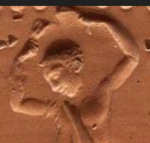 Screenshot_2020-04-03 Screenshot_2020-04-03 Fragment of mold of cup – Results – Advanced Searc...png127 KB · Views: 0
Screenshot_2020-04-03 Screenshot_2020-04-03 Fragment of mold of cup – Results – Advanced Searc...png127 KB · Views: 0
Zampelis Spyros
Member
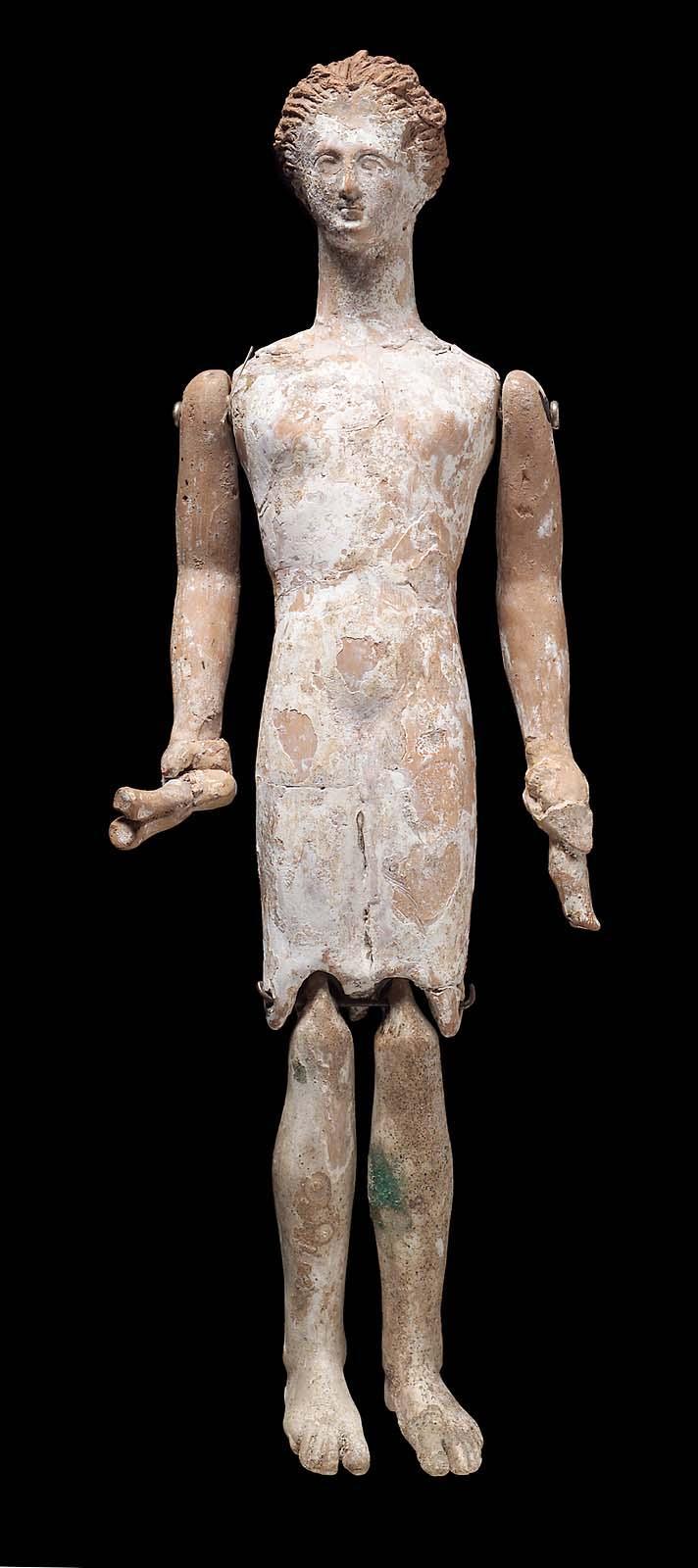
Figurine with moveable limbs
Zampelis Spyros
Member
MFA
Figurine with moveable limbs
Greek
Classical Period
5th–4th century B.C.
Place of Manufacture: Greece, Attica, Athens
Medium/Technique Terracotta
Dimensions Overall: 26.2 x 9 x 5 cm (10 5/16 x 3 9/16 x 1 15/16 in.)
Credit Line Museum purchase with funds donated by contribution
Accession Number01.7883
NOT ON VIEW
CollectionsThe Ancient World
ClassificationsSculpture
DescriptionTerracotta figurine with jointed limbs. The arms are movable at the shoulders and the jegs are attached at the knee joint. Each hand holds a pair of krotala; part of those in the left hand are gone. Appears to be clothed. The figure is split down each side.
Long interpreted as a doll but may in fact have been a votive. Figurines holding krotala are likely meant to represent dancers.
ProvenanceBy 1901: with E. P. Warren; purchased by MFA from E. P. Warren, December 1901
https://collections.mfa.org/objects/151585/figurine-with-moveable-limbs
Figurine with moveable limbs
Greek
Classical Period
5th–4th century B.C.
Place of Manufacture: Greece, Attica, Athens
Medium/Technique Terracotta
Dimensions Overall: 26.2 x 9 x 5 cm (10 5/16 x 3 9/16 x 1 15/16 in.)
Credit Line Museum purchase with funds donated by contribution
Accession Number01.7883
NOT ON VIEW
CollectionsThe Ancient World
ClassificationsSculpture
DescriptionTerracotta figurine with jointed limbs. The arms are movable at the shoulders and the jegs are attached at the knee joint. Each hand holds a pair of krotala; part of those in the left hand are gone. Appears to be clothed. The figure is split down each side.
Long interpreted as a doll but may in fact have been a votive. Figurines holding krotala are likely meant to represent dancers.
ProvenanceBy 1901: with E. P. Warren; purchased by MFA from E. P. Warren, December 1901
https://collections.mfa.org/objects/151585/figurine-with-moveable-limbs
